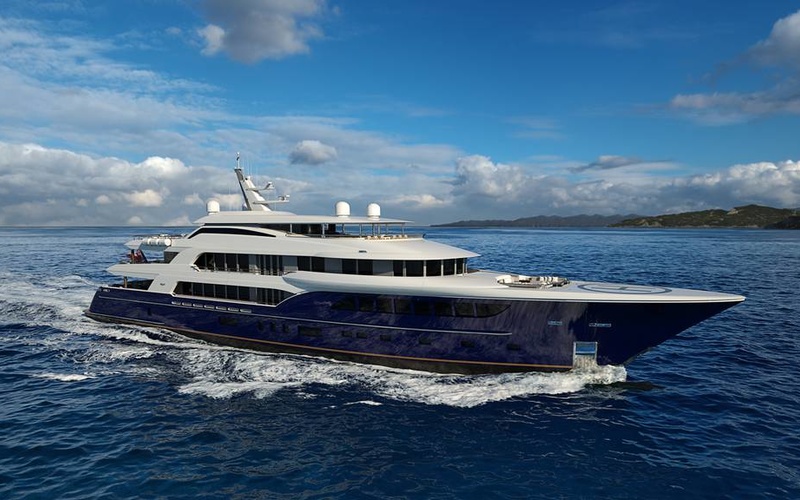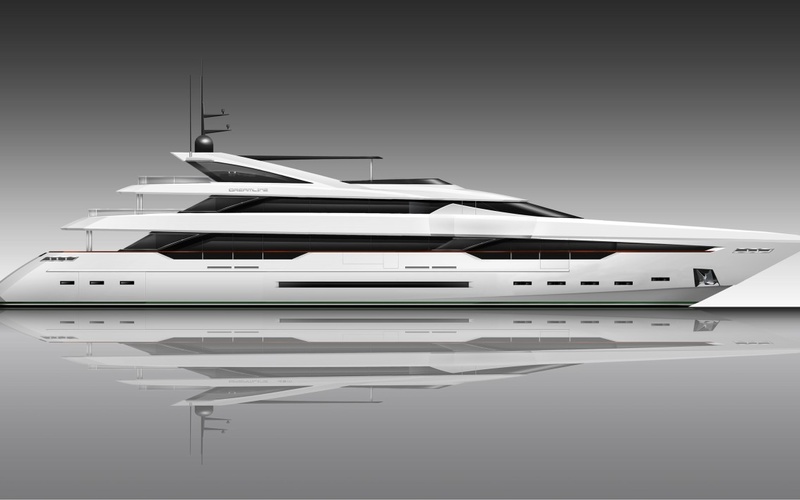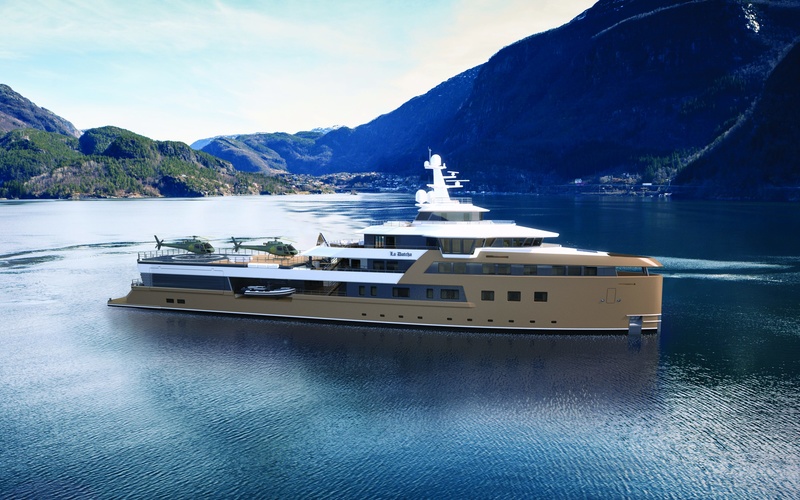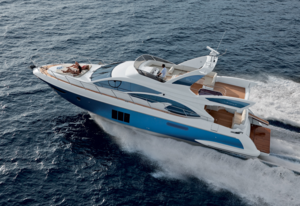
Displacement Yachts
Slower, fuel efficient yachts with maximum living space designed for long-range cruising in luxury and comfort.Manufacturers of displacement Yachts




The brand Admiral produces displacement yachts, motor superyachts and is also active in the superyacht market. There are 15 models currently in production ranging from 45 to 145 meters. We invite you to explore all current and older models from Admiral and contact us for sales and pricing information.
Read more >



The brand Baglietto produces motor superyachts, semi-displacement yachts and is also active in the superyacht market. There are 6 models currently in production ranging from 34 to 61 meters. The current model range includes 3 lines: Dom Line, Fast Line and Tline. We invite you to explore all current and older models from Baglietto and contact us for sales and pricing information.
Read more >


The brand Beneteau Yachts produces aft cockpit sailboats and outboard boats. There are 44 models currently in production ranging from 4 to 19 meters. The current model range includes 8 lines: Antares, First, First SE, Flyer, Gran Turismo, Oceanis, Oceanis yacht and Swift Trawler. We invite you to explore all current and older models from Beneteau Yachts and contact us for sales and pricing information.
Read more >




The brand Benetti Yachts produces displacement yachts, motor superyachts and is also active in the superyacht market. There are 13 models currently in production ranging from 34 to 75 meters. The current model range includes 5 lines: B.Century, B.Now, B.Yond, Class and Oasis. We invite you to explore all current and older models from Benetti Yachts and contact us for sales and pricing information.
Read more >




The brand Burger Boat produces aluminum yachts, motor superyachts and is also active in the superyacht market. There are 11 models currently in production ranging from 15 to 66 meters. We invite you to explore all current and older models from Burger Boat and contact us for sales and pricing information.
Read more >


The brand Canados produces motor superyachts, semi-displacement yachts and is also active in the superyacht market. There are 20 models currently in production ranging from 13 to 44 meters. The current model range includes 3 lines: Canados, Gladiator and Oceanic. We invite you to explore all current and older models from Canados and contact us for sales and pricing information.
Read more >


The brand Codecasa produces displacement yachts, steel yachts and is also active in the superyacht market. There is 1 model currently in production of 42.5 meters. We invite you to explore all current and older models from Codecasa and contact us for sales and pricing information.
Read more >


The brand Custom Line Yachts produces motor superyachts, semi-displacement yachts and is also active in the superyacht market. There are 8 models currently in production ranging from 28 to 50 meters. The current model range includes 2 lines: Navetta Line and Planing Line. We invite you to explore all current and older models from Custom Line Yachts and contact us for sales and pricing information.
Read more >




The brand DL Yachts produces aluminum yachts, hybrid yachts and is also active in the superyacht market. There are 6 models currently in production ranging from 26 to 46 meters. We invite you to explore all current and older models from DL Yachts and contact us for sales and pricing information.
Read more >




The brand Damen produces displacement yachts, expedition yachts and trawlers and is also active in the superyacht market. There are 4 models currently in production ranging from 55 to 105 meters. The current model range includes 1 line: SeaXplorer. We invite you to explore all current and older models from Damen and contact us for sales and pricing information.
Read more >




The brand De Alm produces displacement yachts and steel yachts. There are 28 models currently in production ranging from 7 to 30 meters. The current model range includes 7 lines: Alm Skipper Jacht, Almclassic, Almkotter, Almsloep, Almtrawler, Delfino and Grand Voyager. We invite you to explore all current and older models from De Alm and contact us for sales and pricing information.
Read more >



The brand Gamma Yachts produces expedition yachts and trawlers and steel yachts. There are 4 models currently in production ranging from 18 to 26 meters. We invite you to explore all current and older models from Gamma Yachts and contact us for sales and pricing information.
Read more >
Selling Brokers Displacement Yachts
Category Description
At full speed, the nose of a displacement yacht stays in the water; its hull doesn't rise out of the water at speed the way a planing hull does. On the contrary, it pierces through waves, displacing water. All ocean-crossing yachts have displacement-type hulls because of the fuel efficiency and long range that they give. The other side of the coin is a very moderate maximum speed of 10-14 knots on average. Other important factors are that displacement yachts have better seakeeping characteristics than planing yachts, and that displacement hulls are wider than planing ones, giving you more living space onboard.
The Fast-Displacement Hull Form (FDHF) is a variation of the displacement-type hull with a focus on performance. An FDHF-hulled yacht combines the advantages of displacement and semi-displacement vessels. It can go in the so-called transitional mode as a semi-displacement yacht and achieve speeds of around 20 knots, while in the displacement mode, an FDHF hull boasts fuel economy on par with a full displacement vessel. The FDHF is patented to its developers Van Oossanen, a leading naval architecture firm.
All cruising sailing yachts have full-displacement hulls. In the motor yacht world, the displacement hull form is very popular in the 60 - 100 ft segment, and most 100+ ft superyachts also have displacement hulls.
Buy your own seaworthy yacht for ocean crossings and round-the-world voyages with itBoat! Search for new or used yachts with displacement hulls, compare and choose the right one using itBoat.com's large database and contact us for more information.
How are displacement boats built?
Building a new yacht always starts with the design process, where naval architects make 3D models of the hull using CAD software. After that, a CFD (Computational Fluid Dynamics) analysis is done to evaluate the drag coefficient (basically, resistance) of the hull in water.
At top speeds, wave-making accounts for up to 80% of a displacement hull's drag. A long and thin hull shape reduces drag. Also, the longer the waterline of a displacement yacht is, the higher is her maximum speed. That’s why naval architects always look for ways to lengthen the waterline of a displacement hull. In many cases, a reversed (axe) bow is used for this purpose.
Large displacement yachts are often built from steel and aluminum. The hull is made from steel to guarantee strength and durability even in the most demanding seas. The superstructure, in turn, is made from aluminum to save weight and put more of it down below to lower the center of gravity for better seakeeping. Steel hulls also have a longer life.
Smaller, trawler-like expedition yachts are also built from steel. Steel has its own disadvantages, though. It is more expensive than plastic fibers, needs anodes to prevent corrosion, and has to be regularly repainted.
New developments in the manufacturing process, such as sandwich construction and vacuum resin, have led to increased strength of composite boat hulls. Also, with fiber reinforced plastic, you can shape some rather sophisticated hull forms. Composites are lighter than steel, so GRP and FRP boats don't need large, maintenance-intensive motors to be fast. That’s why a lot of new "pocket explorer" yacht models with displacement hulls are built from FRP.
What types of engines are used on displacement boats?
inboard diesel engines with shaft drives are commonly used on the displacement yachts. Easy maintenance, reliability and fuel economy are main advantages of shaft drives. In the case of displacement boats the arrangement of motors is also critical. On a boat with shaft drives the engine room is located amidships, adding to the center of gravity. On a boat with pod drives or stern drives engines are located at the stern, which is ineffective for a displacement hull.
On many modern yachts diesel engines are supplemented by an electric engine and a set of li-ion batteries. Hybrid yachts can cruise in electric mode at low speed with no emissions and in silence. In traditional diesel mode the main diesel engine recharges batteries under way. At anchor electric engines can be used to power all appliances and climate control systems.
Similar categories

























































 247
247
 250
250
 230
230
 600
600
 464
464
